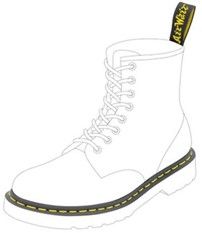- within Intellectual Property topic(s)
- with Senior Company Executives, HR and Finance and Tax Executives
- in United States
- with readers working within the Banking & Credit, Technology and Property industries
In this article, we discuss a type of trade mark that does not crop up very often. The name of this rare creature is the relatively new-fangled 'position trade mark'. For the benefit of any readers who may be unfamiliar with the position trade mark, we will kick off with a crash course in position trade marks.
The EU Intellectual Property Office (EUIPO) Trademark Guidelines tell us the following:
- Definition: A position trade mark is a trade mark that consists of 'the specific way in which the trade mark is placed on or affixed to the product.'
- Representation: A position trade mark must be represented by 'submitting a reproduction that identifies appropriately the position of the mark and its size or proportion with respect to the relevant goods'.
- Disclaimers: Any elements that 'do not form part of the subject matter of the registration must be visually disclaimed, preferably by broken or dotted lines. A description that accords with the representation of the mark may be added to indicate how the sign is affixed to the goods.'
- Inferences: A description that 'infers that the position of the mark may vary with respect to the goods, for example 'The mark consists of [description of the device] applied to the outside of the goods', is not acceptable.'
In summary, a position trade mark protects the unique placement of a mark on a product. It is not just about the mark, but also about the combination of the mark and its positioning.
A recent position trade mark case
The recent case of Mtng Europe Experience, S.L.U. v Airwair International Limited was heard by the Cancellation Division of the EUIPO with judgment handed down on 12 August 2025.
The facts
On 10 June 2024, Mtng Europe Experience applied for a declaration of invalidity of EU trade mark no. 18 686, a registration that belongs to Airwair International Limited and covers footwear in class 25. A representation of this trade mark appears below:

The description of the trade mark reads as follows:
'The black background (outside) and yellow background (inside) heel loop containing the verbal element 'Airwair' and ' WITH BOUNCING SOLES, the heel loop is placed at the top of the backstrap of the footwear, and yellow stitching on a contrasting black welt placed along the length of the welt of the footwear connecting the footwear upper and footwear outer sole.'
The findings of EUIPO's cancellation division
Article 7(1)(a) of the EU Trade Mark Regulation ("EUTMR") states that the EUIPO must refuse to register trade marks that do not conform to Article 4, in other words trade marks that are 'incapable of distinguishing the goods or services of one undertaking from those of another.'
In the present case, the EUIPO Cancellation Division made the following findings:
- It is well established that a representation of a trade mark must be 'clear, precise, self-contained, easily accessible, intelligible, durable and objective.'
- The representation that was provided 'does not enable economic operators to identify and understand, without ambiguity, the subject matter of the protection afforded to the EUTM proprietor.' And, if you're now wondering what an 'economic operator' is, it's what ordinary folk might call a 'company'!
- The essential function of a trade mark is to identify commercial origin, and it is this that enables consumers who bought goods bearing the trade mark to 'repeat the experience if it proves to be positive, or to avoid it if it proves to be negative.'
Result
The EUIPO Cancellation Division held that the AIRWAIR position trade mark does not fall within the scope of Article 7(1)(a) and (b) of the EUTMR. Which, in simple language, means that the application for a declaration of invalidity (cancellation) had to be rejected.
The content of this article is intended to provide a general guide to the subject matter. Specialist advice should be sought about your specific circumstances.


